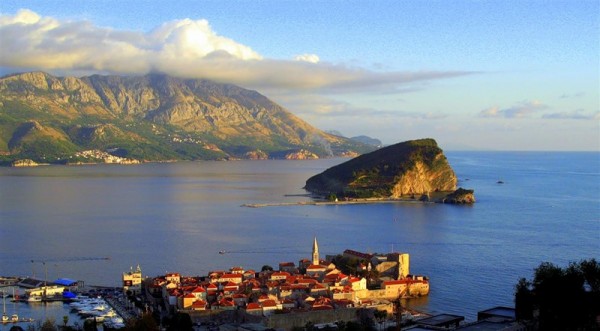One of the smallest countries in Europe, nestled between Croatia’s Dalmatian coast and Albania, Montenegro’s lure has long been its 295km of coastline, home to quiet fishing villages, flashy resort towns, Unesco-recognised fjordscapes and the remains of grand Venetian fortresses.
The Montenegrin coast first came to international attention between 1945 and 1992, when the country was part of socialist Yugoslavia. Famous film stars such as Elizabeth Taylor and Sophia Loren, and royalty such as Princess Margaret, the sister of Britain’s Queen Elizabeth, flocked to the country’s stunning shoreline. But tourism crashed during the Yugoslav Wars of the 1990s – when Montenegrins fought alongside Serbs against neighbouring Croatia – and the industry did not start recovering until 2006, when the country ended a short-lived union with Serbia and became independent.
Today, the coastline is yet again the driving force behind the country’s rapidly increasing tourist numbers. There were 9.1 million overnight stays in Montenegro in 2012, up 25% from 2007 when numbers totalled just 7.3 million. And the World Travel and Tourism Council predicts that tourist numbers are expected to rise 10% a year for the next 10 years. But the affordability of this European gem might be slipping away as increased visitor numbers prompt Montenegro to set its sights on wealthier travellers.
Attracting the well-heeled set
Painstakingly rebuilt after a massive 1979 earthquake shook its foundations to the ground, Budva is Montenegro’s summer party town. Attracting mainly Russians, it resembles a kind of Russian Magaluf, a raucous slice of Slavic hedonism on the shores of the Adriatic, full of fancy boutiques, pricey cocktail bars and marinas packed with gleaming yachts. The sea-facing restaurants – the poshest of which is Jadran (Slovenska Obala 10; 33-45-10-28) – are quite happy to charge you upwards of 80 euros for a fish dish, but there are still a number of seafood restaurants that cater to more modest budgets if you know where to look. Nestled within the old city walls, Demizana (Slovenska obala 3; 33-45-50-28) and Konoba (Mitrov Ljubise, Stari Grad; 63-22-54-03) serve fresh seafood staples such as grilled squid and baked whole fish, plus a multitude of meat options.
There are also plenty of budget-friendly accommodations in Budva. Even in the high season, from June to September, a double room at places such as the friendly Hotel Admiral and the no-frills Apartments Butua is unlikely to cost much more than 50 euros a night.
But while Budva has pockets of affordability, other towns along the coast have moved firmly into the realm of luxury travel. Take the fishing village-turned-hotel Sveti Stefan, an islet of terracotta-roofed houses separated from the land by a narrow peninsula 9km southeast of Budva. After falling to disrepair during the Yugoslav Wars, the village was bought by the luxury Aman resort chain and is now off-limits anyone who is not a guest. One of the nearby beaches is also limited to guests, and the semi-public mainland beach on the other side of the causeway will cost you 50 euros just for the privilege of lying on a lounger.
One of the most ambitious tourism moves can be seen at Porto Montenegro, near the seaside town of Tivat on the Kotor Peninsula, 34km north of Sveti Stefan. A former shipyard used by the Yugoslavian Navy, the port started being redeveloped as a high-end resort in 2011, funded by Canadian billionaire Peter Munk. The marina currently has nearly 200 yacht berths and is expected to have close to 500 by the end of 2014.
The peninsula’s Bay of Kotor is one of the country’s undeniable highlights: a natural harbour ringed by the towering, black-rocked heights that help give the country its name (Montenegro is Venetian Italian for “black mountain”). At the eastern end of the bay, set among the southernmost fjords in Europe, the town of Kotor’s atmospheric streets are full of reminders of this coast’s past as an outpost of the Venetian Empire from 1420 to 1792. Above the Unesco-recognised streets, vestiges of the old fortress walls remain, allowing a commanding view of the bay after a calf-stretching 5km climb. The winding road around the coast presents plenty of opportunities for a photo opportunity, framing Kotor’s spires and battlements against the towering peaks. But the stunning scenery comes at a price: a week’s stay in a rental property for a family of four during July or August can cost as much as 2,350 euros.
For a more affordable visit, stay in Prcanj, 6km to the west. The small, laid-back town is home to little more than 1,000 souls, and the hotels here cost less than those close to Kotor’s walls. The Hotel Bokeljski Dvor costs around 50 euros a night and has views across the bay.
As the Montenegrin coastline sweeps down towards the Albanian border, the land becomes flatter and the coastline has fewer of the coves and bays that lie further north. Ulcinj, a bustling resort town built around a natural harbour, is a world away from the high-end resorts near Porto Montenegro or the Bay of Kotor. Here, near the country’s most revered beach – the 12km-long Velika Plaza – bars sell pints of Montenegro’s local beer, Nicsicko; kebab joints grill lamb shwarma; and holidaymakers peruse beachwear under the spires of Ottoman-inspired mosques. As the country’s northern resorts eye an increasingly well-heeled set, Ulcinj remains an island of affordability. Well, for now.
 Balkan Incoming DMC Travel news, destinations and options in Balkan region
Balkan Incoming DMC Travel news, destinations and options in Balkan region



